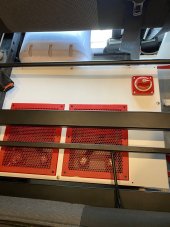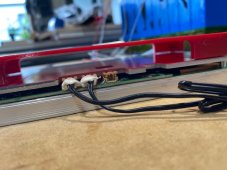MisterSandals
Participation Medalist
Do you have a pic of the wiring?I am seeing an extra 2 amp draw on the A battery over the B battery,
Do you have a pic of the wiring?I am seeing an extra 2 amp draw on the A battery over the B battery,
I just had a look in my picture files, i can't find one of just the wiring, i though i had more photos.Do you have a pic of the wiring?







I use the spring washer due to mobile use, the camper has seen thousands of km on rough corrugated dirt roads, and I’ve found that a spring washer works well to stop the bolts from backing out.What’s your reasoning for using split washers for your BMS bolts?
I’ve learnt something new, thanks, I’ll look at ordering in some when I do my next stock orderThanks for the link those are just the ones I’ve been looking for.
Yeah Belleville washers aren’t as common but apply even pressure to the contact points and are used in higher voltage utility connectors.

This isn't what a BMS was designed to do (its designed to prevent exceeding the safety limits of the battery).I like to set mine at 3.0v so that I have some "reserve capacity" remaining after I get a LVC event to cover emergency needs.
Absolutely true. If you have an inverter, the disconnect voltage of the inverter should leave whatever 'reserve' you want. If you need to tap the reserve, re-adjust the disconnect voltage.This isn't what a BMS was designed to do (its designed to prevent exceeding the safety limits of the battery).
What you are expecting to do is managing your battery usage which is what a battery protect is designed to do.
To clarifiy, true that LVC cannot be set higher than 2.6v?Absolutely true. If you have an inverter, the disconnect voltage of the inverter should leave whatever 'reserve' you want. If you need to tap the reserve, re-adjust the disconnect voltage.
I looked up the Victron Battery Protect and it looks like it might do the trick so downloaded the manual. I am sure that there must be a way to set the cutoff voltage, but the manual doesn't say anything about that. How do you program it? It does not have Bluetooth which would be the obvious method.While you could use the BMS LVD like that, it may work better to put in something like the Victron Battery Protect to cut off the loads at 12.0 volts. You would not use the Battery Protect on the circuit to the inverter.
I looked up the Victron Battery Protect and it looks like it might do the trick so downloaded the manual. I am sure that there must be a way to set the cutoff voltage, but the manual doesn't say anything about that. How do you program it? It does not have Bluetooth which would be the obvious method.
Yes, In the Bluetooth app there are several presets. In addition, there is a "User Defined' setting that allows you to set it to whatever you want.It does not have Bluetooth which would be the obvious method.



